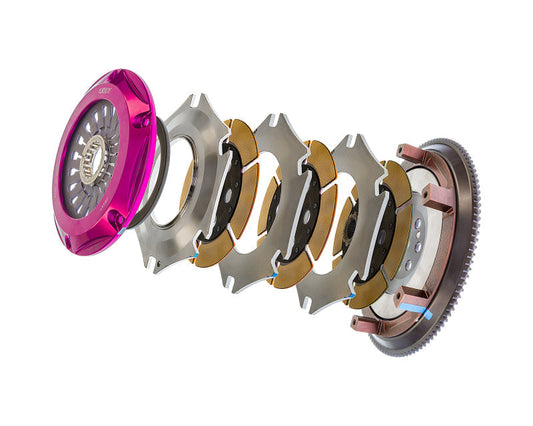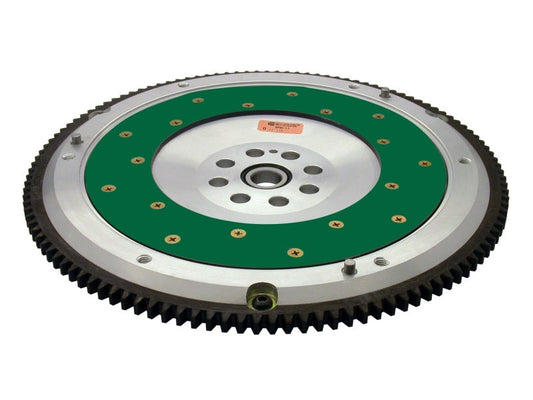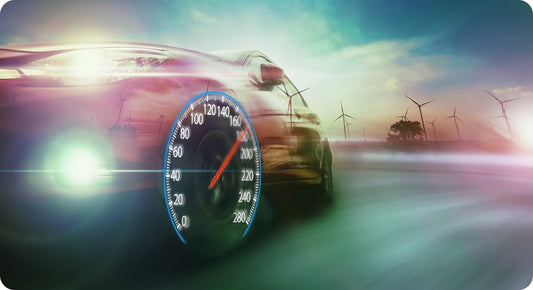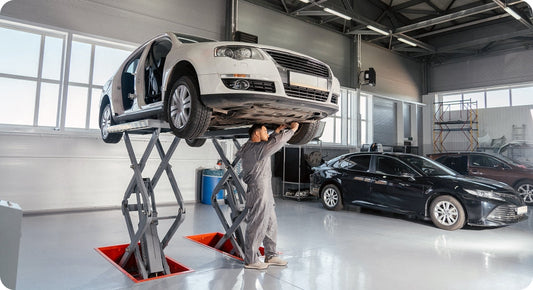When you're looking to improve acceleration, throttle response, and driving feel, swapping to a lightweight flywheel often comes up. But are they the game-changer people claim, or do they cause more issues than they solve? Let’s break down the pros, cons, and myths surrounding lightweight flywheels, so you can decide if one belongs in your performance build.
At WOT Performance Parts, we believe in helping you make smart upgrades that fit your real driving needs. Here’s everything you need to know before spinning into a decision. Contact us today for more information.
What Does A Flywheel Do?
 The flywheel connects your engine to your transmission and serves a few critical roles:
The flywheel connects your engine to your transmission and serves a few critical roles:
-
Stores rotational energy to smooth out engine pulses
-
Helps maintain momentum during gear changes
-
Assists in starting the car (starter motor spins the flywheel)
- Provides surface area for the clutch disc to grab
A heavier flywheel keeps your engine spinning more steadily, especially at low RPM. A lightweight flywheel reduces rotational mass, making it easier for the engine to rev up and down quickly.
Pros Of Lightweight Flywheels
✅ Faster Revving
- Engine RPM rises and falls much quicker
- Sharper throttle response
- Better control in performance driving situations
✅ Improved Acceleration
-
Reducing rotational mass = less energy needed to spin up
- Especially noticeable in 1st, 2nd, and 3rd gears
✅ More Connected Driving Feel
- Lightweight flywheels create a more "mechanical," immediate feeling between your right foot and the engine response
✅ Slight Weight Savings
- Every pound of weight removed from rotating assemblies counts more than static weight savings elsewhere
✅ Potentially Slight Power Gains
- Freeing up parasitic loss allows more engine power to reach the wheels
Cons Of Lightweight Flywheels
🚫 Harder Starts From A Stop
- Less stored rotational energy can make smooth launches trickier
- Requires more careful clutch modulation, especially in traffic
🚫 Rougher Idle (In Some Builds)
- Especially noticeable with big cams, lightweight cranks, or aftermarket ECUs
- Some cars may hunt for idle or stall more easily if improperly tuned
🚫 Reduced Low-End Torque Feel
- Heavier flywheels amplify low-RPM torque by storing energy
- Light flywheels can make engines feel "gutless" at very low speeds, especially in heavier vehicles
🚫 More Noise
- Expect some additional transmission gear rattle at idle, especially with single-mass lightweight setups
Common Myths About Lightweight Flywheels
🚫 "They Add Horsepower."
Nope! They reduce the rotational mass your engine has to accelerate, which frees up horsepower to the wheels—but they don’t magically create more engine power.
🚫 "They Make Cars Unstreetable."
Mostly false. If you match your flywheel to your build properly, you can easily daily-drive a lightweight flywheel. It's more noticeable in heavy vehicles with low-torque engines, but most modern setups handle it fine with slight driving style adjustments.
🚫 "Only Race Cars Need Them."
False. Many street performance builds benefit from a lightweight flywheel,  especially naturally aspirated engines, small-displacement motors, or cars built for canyon runs and spirited driving.
especially naturally aspirated engines, small-displacement motors, or cars built for canyon runs and spirited driving.
When A Lightweight Flywheel Makes Sense
✅ High-revving engines (Honda K-series, Miata, S2000, etc.)
✅ Canyon cars, autocross cars, and track builds
✅ Turbocharged cars are looking for quicker spool
✅ Street cars where driver engagement matters more than luxury smoothness
When You Might Want To Skip It
🚫 Heavy vehicles (full-size trucks, big sedans) used for daily commuting
🚫 Cars primarily driven in stop-and-go traffic
🚫 Builds where low-end torque and smoothness are the top priorities (e.g., towing vehicles, family haulers)
Pro Tip: Match Your Flywheel To Your Clutch
Whenever you're swapping to a lightweight flywheel, it's smart to pair it with a performance clutch kit. Many aftermarket clutches are designed with specific flywheel weights in mind, and upgrading both ensures better drivability and durability.
Also, some setups use single-mass flywheel conversions when going lightweight—be prepared for slight gear rattle noise compared to OEM dual-mass setups.
Final Verdict: Are Lightweight Flywheels Worth It?
Yes—for the right build.
If you want sharper response, quicker revs, and a more visceral driving experience, a lightweight flywheel is an excellent upgrade. Just understand the slight trade-offs in idle smoothness and low-end feel, and make sure it matches your overall driving goals.
In the right car, a lightweight flywheel transforms every throttle input into something that feels alive.
Upgrade Your Driving Experience With WOT Performance Parts
At WOT Performance Parts, we stock lightweight flywheels, clutch kits, and drivetrain upgrades from top brands trusted by racers and street enthusiasts alike. Whether you’re building a track beast or just want a sharper daily, we have the parts—and the advice—you need to do it right.
Shop now and feel the difference where it matters most—on your right foot.






